Magic: The Gathering is a popular tabletop card game that was invented by Richard Garfield in 1993 and it represents the modern version of the original trading card game. At its peak, at least 20 billion Magic cards were produced per decade for over 35 million people who play it. Some of these cards have become extremely valuable.
This article lists the top 10 rarest and most valuable magic cards that you can purchase.
What Are Magic Cards?
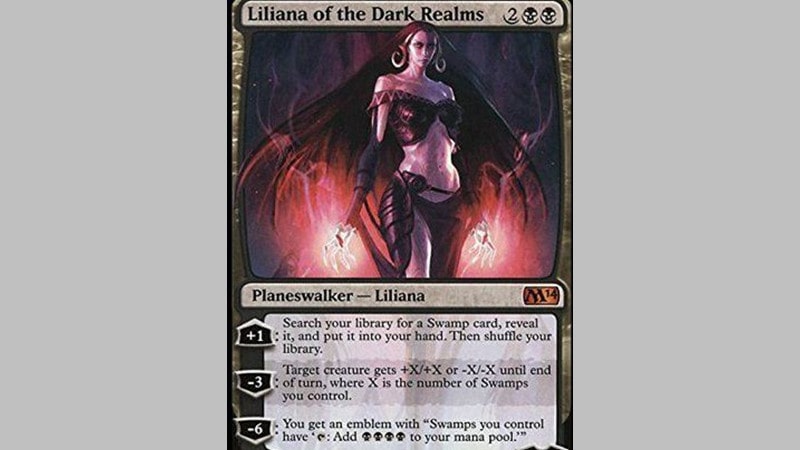
Image source: Pinterest
Magic cards are standard components of the popular tabletop game, Magic: The Gathering. The word card refers to the Magic card with a Magic card front and a Magic Card back or a double-faced card. The game has become so popular that some people are designing their own magic cards.
But tournament-legal magic cards are 2.5 by 3.5 inches (6.35 x 8.89 cm) thick and weigh 0.064 ounces (1.814 grams). On the other hand, non-foil magic cards are approximately 0.012 inches (0.35 mm) thick. Like regular cards, magic cards feature two layers of cardboard attached together by a dense blue adhesive to make them opaque, even when looked at in direct sunlight.
They also have stock that makes them easy to shuffle without losing the recoil or bendability. Their corners are cut with a range of 1/8 inch (3mm). Foil cards come with an extra layer on them to highlight certain parts of their artwork, especially the white under-print plate and WUP.
The printed material on these cards is covered in a very thin and clear protective coating. A different cardstock is used to produce the rules inserts and tokens. That’s why they don’t have the dense coating in the middle. Non-foil cards are completely recyclable, including their blue adhesive core.
10 Most Valuable Magic Cards
If you find one of these cards, you will have gotten the real Magic touch! In fact, any of these cards can earn you an impressive cash offer. Keep in mind the fact that the most valuable MTG cards originate from the Alpha set with a black border. Here are the top 10 rarest and most valuable magic cards.
1. Black Lotus ($28,000-35,000 and up)
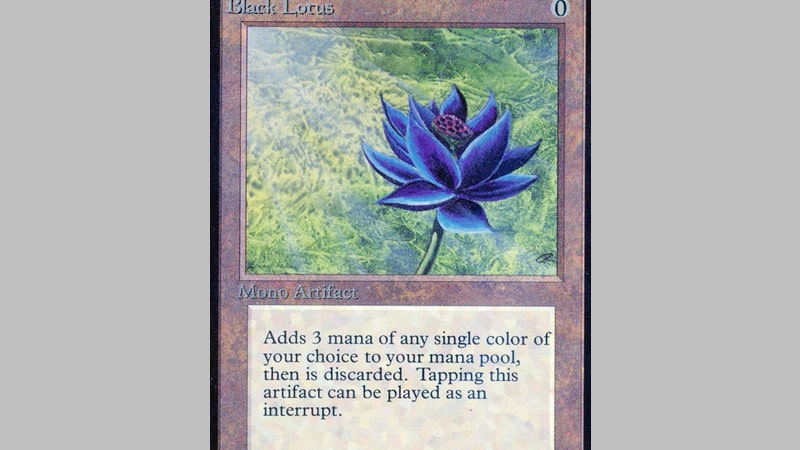
Image source: Pinterest
Everybody who loves the Magic: The Gathering game dreams of owning the Black Lotus card. The card is available in three sets: Alpha, Beta, and Unlimited. The Alpha and Beta sets have a black border, while the Unlimited set has a white border. The value of Beta and Unlimited versions of the card is between $4,000 and $6,000.
2. Ancestral Recall ($19,500-20,000)
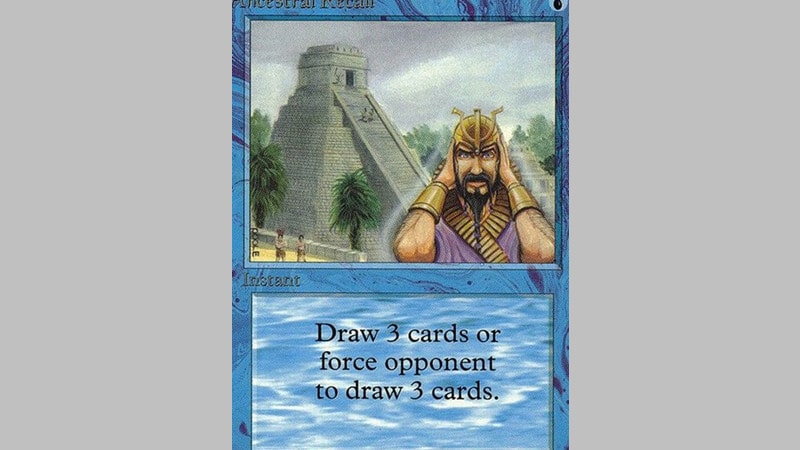
Image source: Pinterest
This magic card is available in three sets: Alpha, Beta, and Unlimited. While the Unlimited set has a white border, the other two have a black border. There are several other versions of this card that cost between $2,000 and $2,500.
3. Mox Sapphire ($13,500)

Image source: Pinterest
This magic card comes in three original sets: Alpha, Beta, and Unlimited. The Alpha and Beta sets have a black border, while the Unlimited set is printed with a white border. The value of the Beta version of the card is $2,000, while the Unlimited version is valued at $1,200.
4. Mox Jet ($9,000)
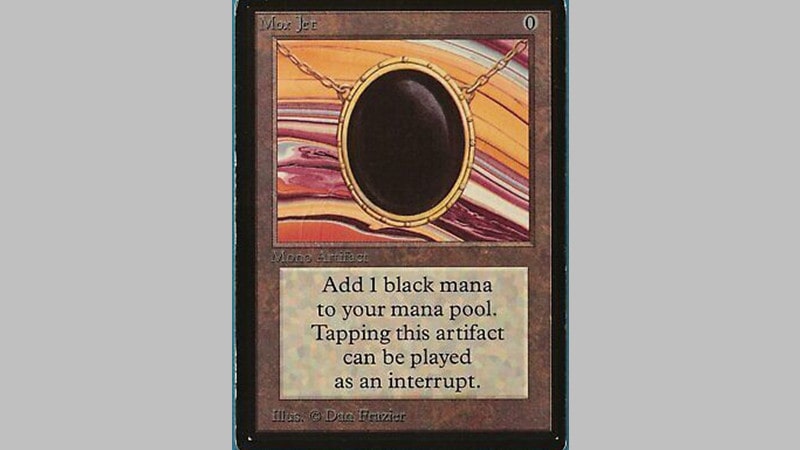
Image source: Pinterest
The Mox Jet magic card is available in Alpha, Beta, and Unlimited Sets. The Alpha and Beta sets are printed with a black border, while the Unlimited version comes with a white border. The value of Beta and Unlimited sets is about ($3,200).
5. Underground Sea ($7,500-8,000)

Image source: Pinterest
This magic card comes in four main sets: Alpha, Beta, Unlimited, and Revised. The Alpha and Beta sets are printed with a black border, while the Unlimited and Revised sets have a white border. The Revised version is valued at $500 while the Unlimited set is valued at $1,500.
6. Time Walk ($6,500)

Image source: Pinterest
This card is available in three sets: Alpha, Beta, and Unlimited. The Alpha and Beta versions of the card come with a black border, while the Unlimited version is printed with a white border. The value of the Beta version is $4,000, while that of the Unlimited version is $2,500-3,000.
7. Time Vault ($5,500-5,900)

Image source: Pinterest
The Time Vault card is available in three main sets: Alpha, Beta, and Unlimited. The Alpha and Beta versions come with a black border, while the Unlimited version is printed with a white border. The Unlimited version is valued at $600-1,200.
8. Mox Ruby ($5,600+)
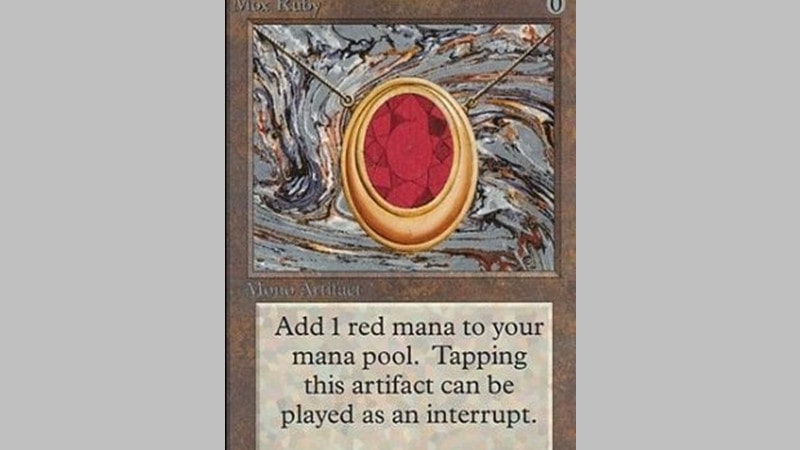
Image source: Pinterest
The Mox Ruby magic card is available in three sets: Alpha Beta and Unlimited. The Alpha and Beta versions come with a black border, while the Unlimited version has a white border. The Beta version is worth $3,400, while the Unlimited version is valued at $2,300. This magic card also has an uncut collectors version and an uncut foreign version that is valued at $500.
9. Tropical Island ($5,000-5,500)
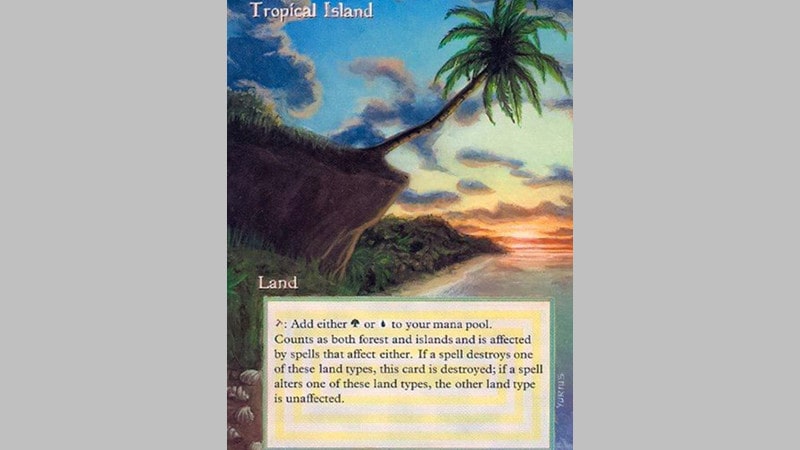
Image source: Pinterest
This magic card is available in three sets: Alpha, Beta, and Unlimited. The Alpha and Beta versions are printed with a black border, while the Unlimited version, which is valued at $500, is printed with a white border. The card also comes in a Revised version, which is worth $250.
10. Wheel of Fortune ($2,500+)

Image source: scryfall.com
This magic card is available in three main sets: Alpha, Beta, and Unlimited. The Alpha and Beta versions come with a black border, while the Unlimited version is printed with a white border. The card is also available in the Revised Version, which is valued at $100. The Unlimited version is worth $300. There is also a special Judge Promo version of the card, which is valued at $425.
How to Know If Your Magic Cards Are Worth Money

Image source: Pinterest
Do you have a deck of Magic: The Gathering cards sitting around your desk gathering dust? If so, you should check how much they are worth. They could earn you an impressive cash offer from someone eager to own them. You just need to know if they are worth some money.
Fortunately, there are numerous applications and online platforms that can help you to know how much your magic cards are worth. You just need to download the app and upload the scanned cards to the platform for an instant valuation. Fortunately, most of these apps and online platforms are absolutely free to use.
When you are scanning your cards, place them on a clean white background and under a good source of light. Also, remember to double-check the set and condition of your cards when scanning them. You also need to know if your cards are foil or non-foil.
Understand that the valuation apps use the artwork on your cards to identify their set and estimate their real value. This is important because some artworks are printed over multiple card sets. Don’t forget to check if the app is providing you with the market price or buylist price.
The market price shows the average value of the card, while the buylist price shows what you are likely to get when you sell the card to a store owner, who will then place it on the market.
-
Sorted by Rarity
You can also guess how much your cards are worth by sorting them by their rarities. The more uncommon a card is, the higher the value. The easiest way to know how rare a card is is to check the color of the set symbol under the art to its right.
The four main rarities include Common (C) (Black), Uncommon (U) (Silver), Rare (R) (Gold), and Mythic (M) (Orange-red/bronze). Most common and uncommon magic cards are worth less than a dollar, typically pennies tops. Despite being rarer than non-foil cards, many foil cards are still worth less than a dollar. So, you should pay more attention to the rarities and mythical.
-
Sorted by Sets
If you are sorting your cards by sets, focus on the most valuable sets, which include Alpha, Beta, Unlimited, Antiquities, Legends, and Arabian Nights. Fortunately, Antiquities, Legends, and Arabian Nights come with symbols that can easily be identified.
Just ensure that they have black borders because white borders aren’t as valuable as black borders. Also, make sure the set symbols are original because reprints aren’t worth as much.
-
Sorted by Condition
Once you are satisfied that your cards may be worth something, it’ time to check their condition. The easiest way to do this is to check each card under the light. Pay attention to the wear and tear along the edges, scratches in the artwork, ink or misprint markings, folds and creases, water damages, and so on.
There are usually five conditions:
• Near mint: Crisp edges, with minimal to no wear from handling or playing.
• Lightly played: Minor wear on edges or corners and minimal scuffing from play and shuffling.
• Moderately played: Border/corner wear, shuffling creases, scuffing. As long as the integrity of the card is still stable.
• Heavily played: Serious wear, but can still be sleeve playable.
• Damaged: Tears, bends, crinkles, water damage, signatures, ink marks, etc.
Keep in mind the fact that a deck that is out of fashion will have its cards drop in value. So, it’s important to sell your cards when they are still in fashion.







